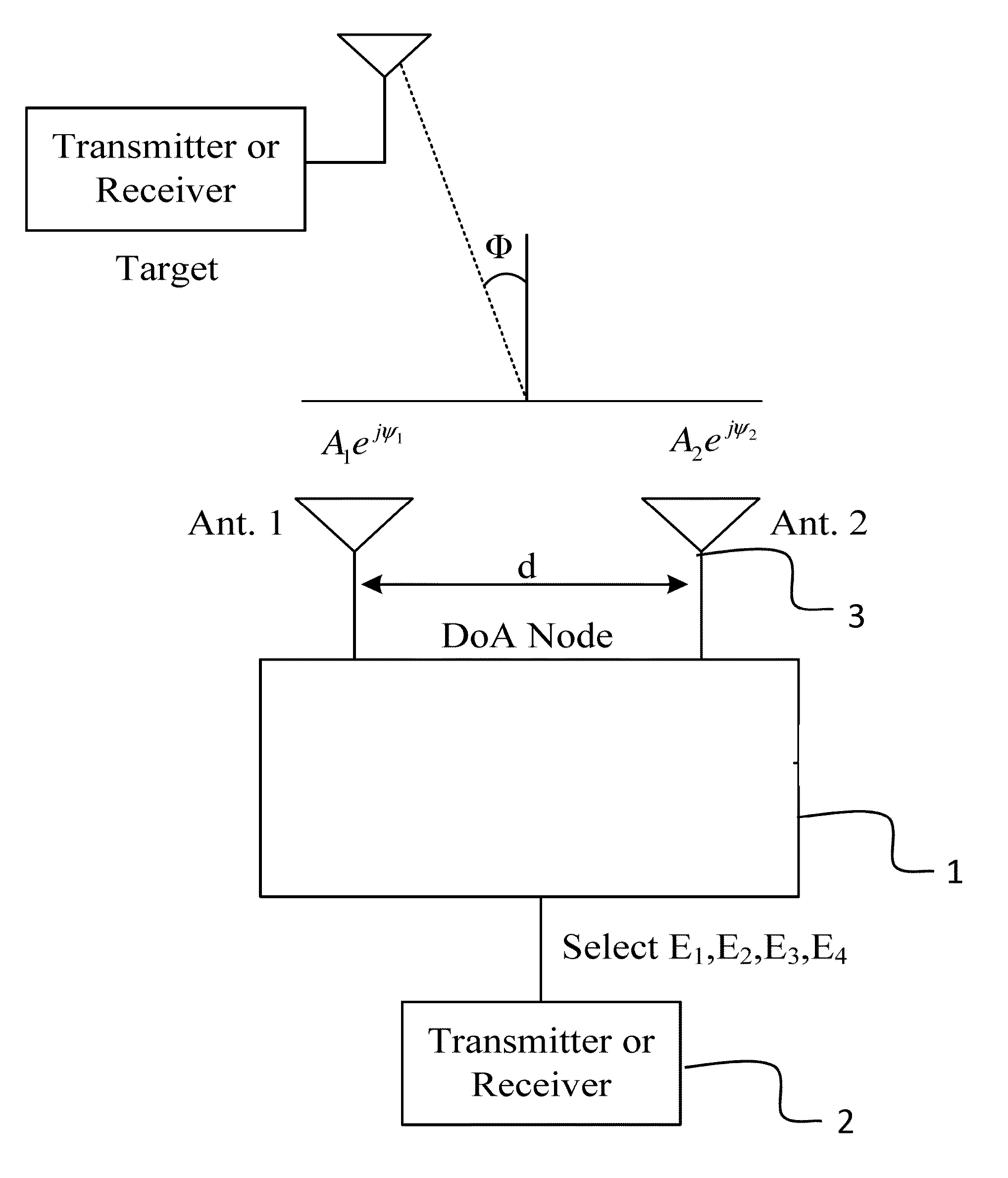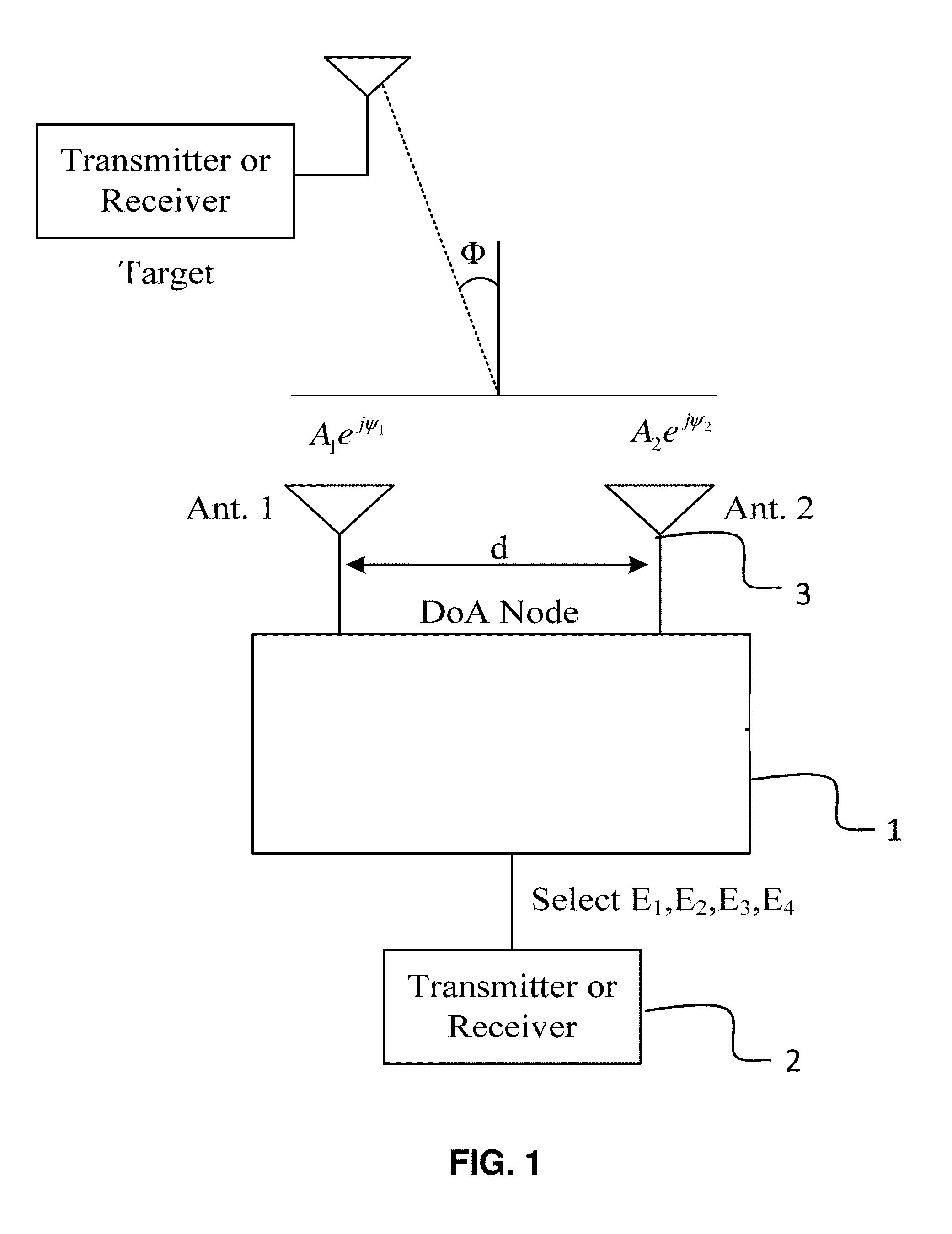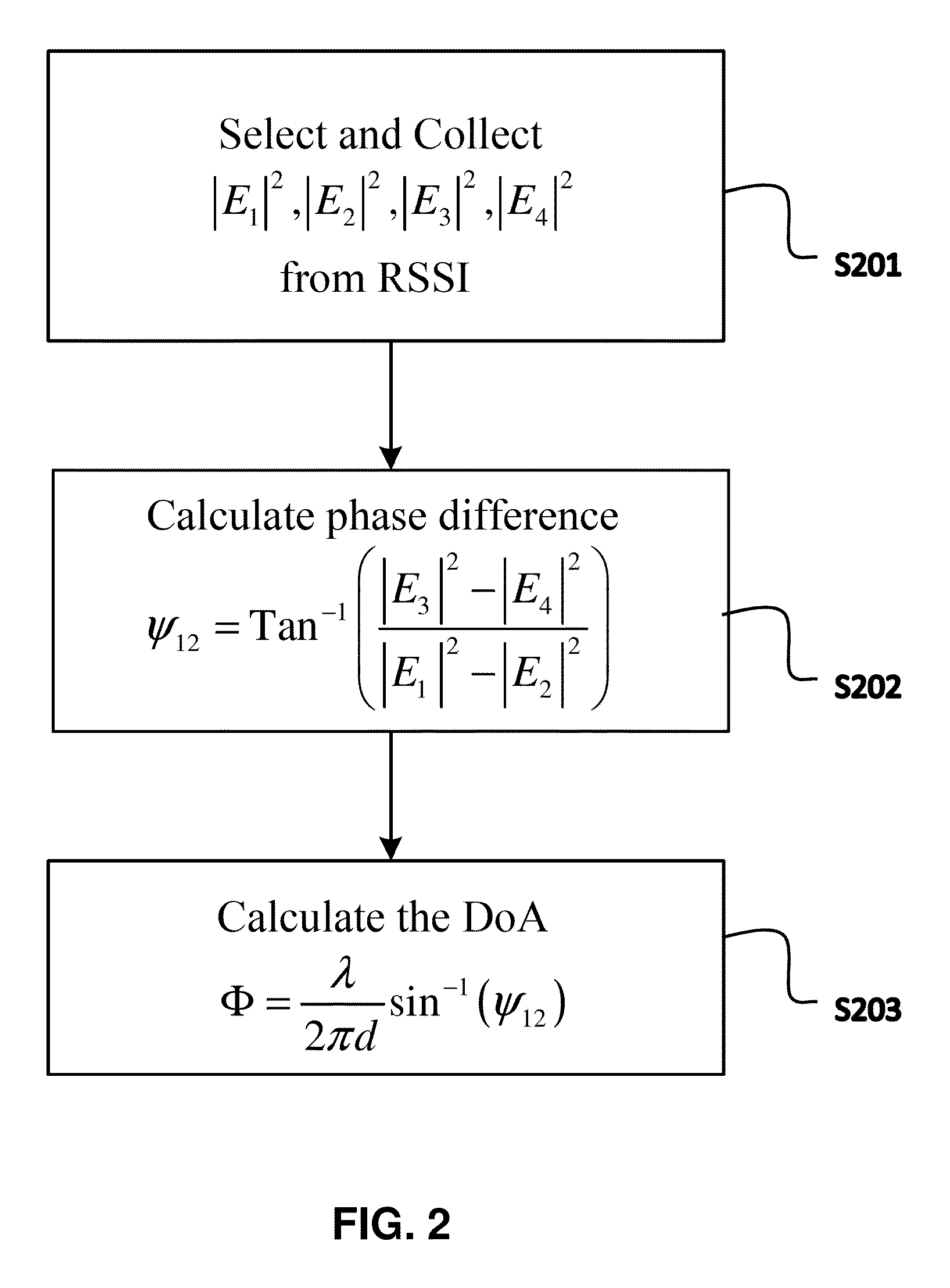Rss-based doa indoor location estimation system and method
a location estimation and receiver technology, applied in surveying and navigation, navigation instruments, instruments, etc., can solve the problems of indoor environment gps receivers that are not very effective in determining accurate positioning or location estimation, gps receivers that are located indoors, and deterioration in position determination accuracy, so as to achieve low cost and higher accuracy
- Summary
- Abstract
- Description
- Claims
- Application Information
AI Technical Summary
Benefits of technology
Problems solved by technology
Method used
Image
Examples
first embodiment
[0033]In this embodiment, only four vector-sum states of Antennas 1 and 2 are needed for calculating the incident angle φ of the wireless target, thus an efficient method requiring less power consumption, and without requiring the usage of any continuous adjustable phase shifting (being more expensive option) is provided. As comparison, for example, other conventional technique using null scanning at angle precision of 1 degree would require a total of 180 times for scanning from 0 degree to 180 degrees. On the other hand, present invention requires only a total of scanning of 4 times. Moreover, multipath interference can also be evaluated by the VSD algorithm in this embodiment alone, without requiring any extra other additional elements.
[0034]The device configuration for the vector signal deconstructor (VSD) 100 according to the first embodiment includes a 0° reference line 20, a 0° 190° switchable phase shifter 22, a quadrature hybrid (3-dB 90° coupler) 24, and a 1P2T absorptive ...
second embodiment
[0050]In the second embodiment, the 3-path VSD is utilized by switching the 1P2T switch to obtain the location (X, Y) of the wireless target from the (θ, φ) of the localized object by assuming the height of the wireless target to be between 100 cm to 180 cm above the floor level (S 107).
[0051]The location (X, Y) data of the wireless target is transmitted to the wireless access point unit for communication to a host computer for further processing (S 108).
[0052]A RSS to DOA localization system has been set up according to a third embodiment of the present invention. The RSS to DOA localization system 250 of the third embodiment is based on the received signal strength (RSS)-based direction-of-arrival (DOA) location estimation method (RSS to DOA) of the second embodiment of present invention, and includes only one DOA sensor node 111 deployed on the ceiling in the middle of a room inside the localization region, as shown in FIG. 7. The DOA sensor node 111 sends out a set number of sig...
PUM
 Login to View More
Login to View More Abstract
Description
Claims
Application Information
 Login to View More
Login to View More - R&D
- Intellectual Property
- Life Sciences
- Materials
- Tech Scout
- Unparalleled Data Quality
- Higher Quality Content
- 60% Fewer Hallucinations
Browse by: Latest US Patents, China's latest patents, Technical Efficacy Thesaurus, Application Domain, Technology Topic, Popular Technical Reports.
© 2025 PatSnap. All rights reserved.Legal|Privacy policy|Modern Slavery Act Transparency Statement|Sitemap|About US| Contact US: help@patsnap.com



